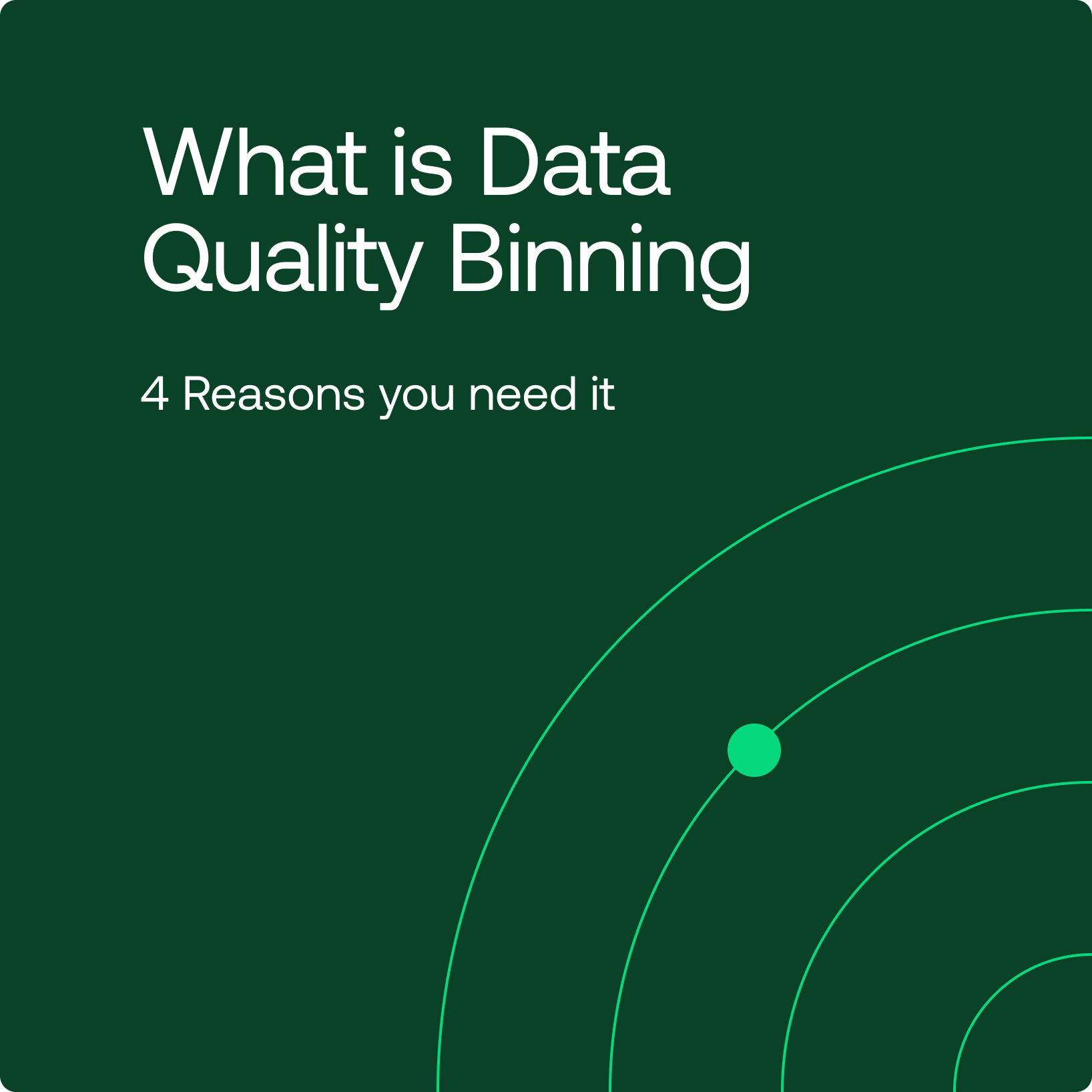Data quality binning: what is it and why do you need it?
In the modern data landscape, engineering teams grapple with maintaining the accuracy and reliability of petabyte-scale data, a cornerstone of data-driven decision-making, without compromising cost and performance SLAs. Telmai’s new Data Quality Binning feature addresses this challenge, ensuring high-quality data for efficient machine learning model training and reliable analytics.

In today’s world, data engineering teams constantly deal with petabyte-scale data that flows through their complex data ecosystems. Maintaining data accuracy and reliability is the foundation for data-driven decision-making. However, doing this without impacting the cost and performance SLAs of the data pipeline is becoming a challenge.
A minor error can propagate through the pipeline, leading to inaccurate insights and misguided decisions. Telmai’s new Data Quality Binning feature comes into play here. It enables data teams to ensure high-quality data flows through the pipeline for faster and cost-efficient machine learning model training and reliable analytics.
What is data quality binning?
Data quality binning is a pre-processing technique used to segregate ‘suspicious’ data from your pipeline and allow ‘good’ data to flow downstream of it. This segregation ensures that only accurate and reliable data flows through your pipelines while erroneous data is set aside for further analysis or correction.

Telmai’s Data Data Quality Binning operates on predefined correctness rules, a set of guidelines that you establish to define the accuracy and relevance of your data.
As data flows through the pipeline, Telmai checks each data point against these correctness SLAs to identify and isolate any data that deviates from these SLAs. The good data adheres to the SLAs and continues on its journey through the pipeline.
Telmai’s ability to conduct this scrutiny in real-time makes it great, ensuring that your data pipeline remains uninterrupted.
Data quality binning in action

Now, let’s understand how Telmai’s Data quality binning works. Let’s consider a scenario where we are tracking the user count of an app that’s available for Android and iOS. However, a bug in the Android version has caused the user count to double.
The initial step in implementing Data quality binning is defining the correct rules. This criterion identifies data considered ‘suspicious.’ For example, in our scenario, a rule might flag user counts significantly higher than the historical average.
Once the correctness rules are set, Data Quality Binning springs into action. It scrutinizes each piece of data against these rules, identifying those that comply as the ‘suspicious’ data.
Specifying the binning destination is crucial as it determines where the segregated data will be directed. In our app tracking scenario, the ‘suspicious’ data, which is the inaccurate user count from the Android version, is routed to a specified destination for further analysis or correction.
Post-segregation, the ‘good’ data continues its journey through the pipeline, ensuring that the analytics and insights are accurate and trustworthy. Meanwhile, the ‘suspicious’ data awaits correction or further analysis, thus preventing any propagation of inaccuracies through the pipeline.
The capability to automate this process of segregating ‘good’ and ‘suspicious’ data in real time significantly reduces the manual effort and time required to ensure data quality, thereby accelerating the time-to-value in your operations.
Steps to improve your data quality
Ensuring data is accurate and reliable is more than just a task; it’s about doing the job right.

With Telmai, you’re not just fixing data mistakes, you’re proactively identifying and separating them early on, making sure the data that flows through is dependable and consistent.
Ready to enhance your data quality further? Request a demo of Telmai today and see how it can streamline your data.
Passionate about data quality? Get expert insights and guides delivered straight to your inbox – click here to subscribe to our newsletter now.
- On this page
See what’s possible with Telmai
Request a demo to see the full power of Telmai’s data observability tool for yourself.
